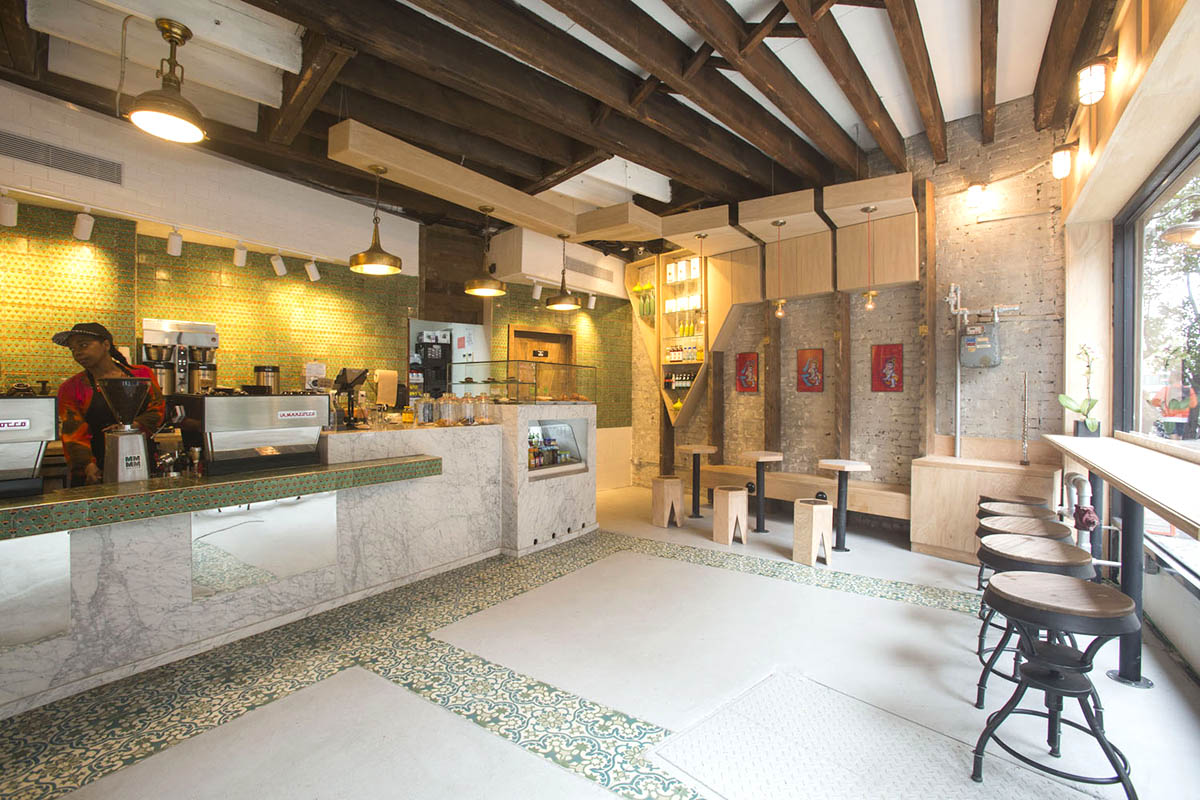[I]t’s a thoughtful dialogue on the duality of the masculine and feminine, a modern take on the love story between Krishna and Radha expressed through a mix of inspirations coming from Indian art and New York modern aesthetics, and it serves single-origin coffees and baked goods from Robicelli’s.
The architecture of Iconic Café sprang from Studio Vural, the office of Turkish-born architect Selim Vural. Selim was inspired by an image of the Hindu deity Krishna and his beloved Radha that he found mixed in with the rubble of the abandoned laundromat where the café was planned.
“I just left it there because there was an air about it,” Selim told me as we chatted in his office, seated next to the long-handled ibrik he prepares his Turkish coffee on, perched on its tall cylindrical burner. “And then I started researching.”
When you come to New York City from a different culture then you want to be a part of this and you’re hesitant about your own culture.
The plan all along had been to build out a café with a modernist, industrial feel. Selim came to owner Hemal Sheth with the news that he had found a photo in the rubble and discovered it was Krishna and Radha and wouldn’t it be great to base the design of the café on their love story. Hemal told Selim that his inspiration was less divine and more serendipitous. He had placed the photo there in the rubble for good luck. As for the café design, he wasn’t sure.

It was also Hemal’s first taste of New York’s café scene, and following the pack with an industrial-style café felt safer than striking out on one’s own. Eventually, Selim’s vision for the space won out—Hemal said, “Why not? Lord Krishna is my god after all”—and in came vibrant tiles bearing the flute and peacock feather, and oak paneling to complement the richness of the restored ninety-year-old wood joists.
The final product imposes Indian art theory onto sleek American edges. Selim was careful not to “imitate India.” The café also features single-origin pour-overs from India, a country whose beans are overlooked in favor of Central and South American and African varietals.
The café provides a space for conversation and connection that Selim believes contemporary New York sometimes lacks. A nearby Gimme! Coffee location has the design he was trying to avoid: a crisp white interior with no seating. “When I was growing up in Turkey—and on my visits in the Middle East—you could see public space is very cherished in these cultures,” he says. So for a finishing touch, he added octagon tables, a feature that’s not from either India or the United States but, Selim says, “from the quintessential Middle Eastern café.”
—Peter D’Amato is a writer based in New York City.
















